Egypt is a land full of history and beauty. It invites visitors to explore its ancient wonders and lively culture. From the famous pyramids in Giza to the busy markets in Cairo, Egypt has something for everyone. This blog will take you through the top 50 places to visit in Egypt, showing you its historical sites, natural beauty, and cultural treasures. Join us on this journey to discover the magic of Egypt, a place that offers unforgettable adventures and amazing experiences.
Cairo

Cairo, Egypt’s bustling capital, brims with history and vibrant life. Not only is it home to the grandiose Egyptian Museum, but it also houses countless artifacts from ancient civilizations. Moreover, its lively streets and bustling bazaars offer an immersive experience into Egyptian culture and modern urban life.
Giza Pyramids
The Giza Pyramids stand as iconic symbols of ancient Egypt. These massive structures, built as tombs for the pharaohs, reflect the remarkable engineering prowess of the ancient Egyptians. Additionally, the Sphinx, guarding the pyramids, adds to the mystical allure of this historical site.
Luxor

Luxor, often referred to as the world’s greatest open-air museum, is teeming with monumental architecture. The ancient city of Thebes lies within Luxor, and its temples and tombs offer a glimpse into the grandeur of Egypt’s New Kingdom period. Furthermore, the Karnak Temple complex and Luxor Temple are highlights that captivate every visitor.
Aswan

Aswan, a serene city on the Nile, is known for its beautiful landscapes and historical significance. Here, visitors can explore the Philae Temple, dedicated to the goddess Isis, and enjoy the peaceful ambiance of the Nubian villages. Moreover, Aswan serves as a gateway to other significant sites like Abu Simbel.
Alexandria
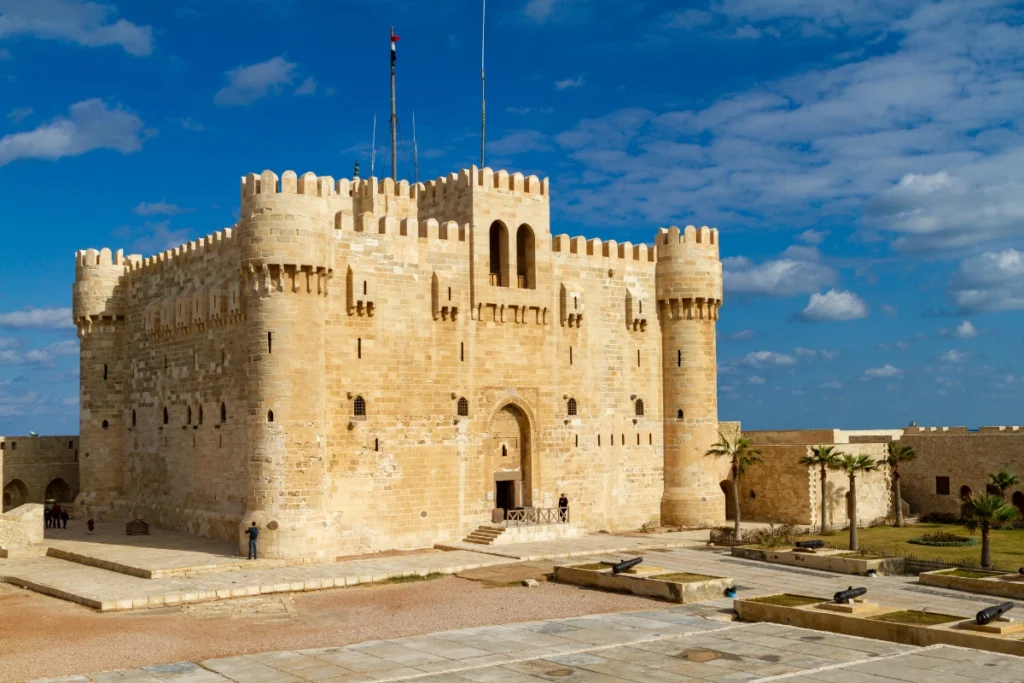
Founded by Alexander the Great, Alexandria boasts a rich history intertwined with Greek and Roman influences. The city is famed for its ancient library and the towering Lighthouse of Alexandria, one of the Seven Wonders of the Ancient World. Today, the modern Bibliotheca Alexandrina continues this legacy of knowledge and culture.
Abu Simbel Temples

The Abu Simbel Temples, carved into a mountainside, are marvels of ancient engineering. These colossal structures, dedicated to Ramses II and his queen Nefertari, were relocated to prevent their submersion by the Nile. Besides their architectural splendor, the temples are known for their intricate carvings and historical significance.
Valley of the Kings

The Valley of the Kings, a royal burial ground, is home to the tombs of numerous pharaohs, including Tutankhamun. This site offers a fascinating glimpse into ancient burial practices and the afterlife beliefs of the Egyptians. Furthermore, the vibrant wall paintings within these tombs narrate stories of the past.
Dahab

Dahab, a former Bedouin fishing village, has transformed into a popular dive destination. Its crystal-clear waters and vibrant coral reefs attract divers from around the world. Additionally, the laid-back atmosphere and scenic landscapes make it an ideal spot for relaxation and adventure alike.
Sharm el-Sheikh

Sharm el-Sheikh is renowned for its stunning beaches and world-class diving spots. The Red Sea here is teeming with marine life, making it a paradise for snorkelers and divers. Moreover, the city’s luxurious resorts and lively nightlife add to its appeal as a top tourist destination.
Hurghada
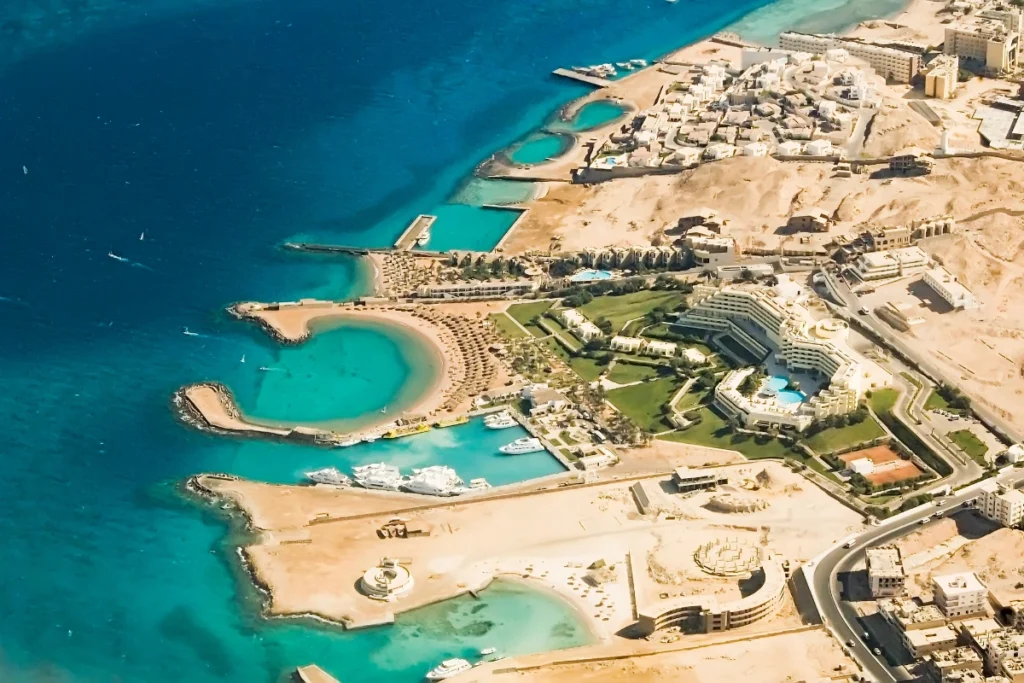
Hurghada another gem on the Red Sea, offers pristine beaches and a variety of water sports. Its extensive coral reefs and marine biodiversity attract divers and snorkelers. Besides, the city has developed into a vibrant hub with numerous entertainment options and a lively marina.
Siwa Oasis

Siwa Oasis, nestled in the Western Desert, is a haven of natural beauty and tranquility. Known for its olive groves and date palms, the oasis also boasts the ancient Oracle Temple of Amun. Moreover, the unique culture and traditions of the Siwan people provide an enriching experience.
Edfu

Edfu is home to the remarkably well-preserved Temple of Horus, the falcon-headed god. This Ptolemaic temple offers insights into ancient Egyptian religion and architectural practices. Additionally, the detailed hieroglyphs and reliefs narrate significant mythological events.
Philae Temple
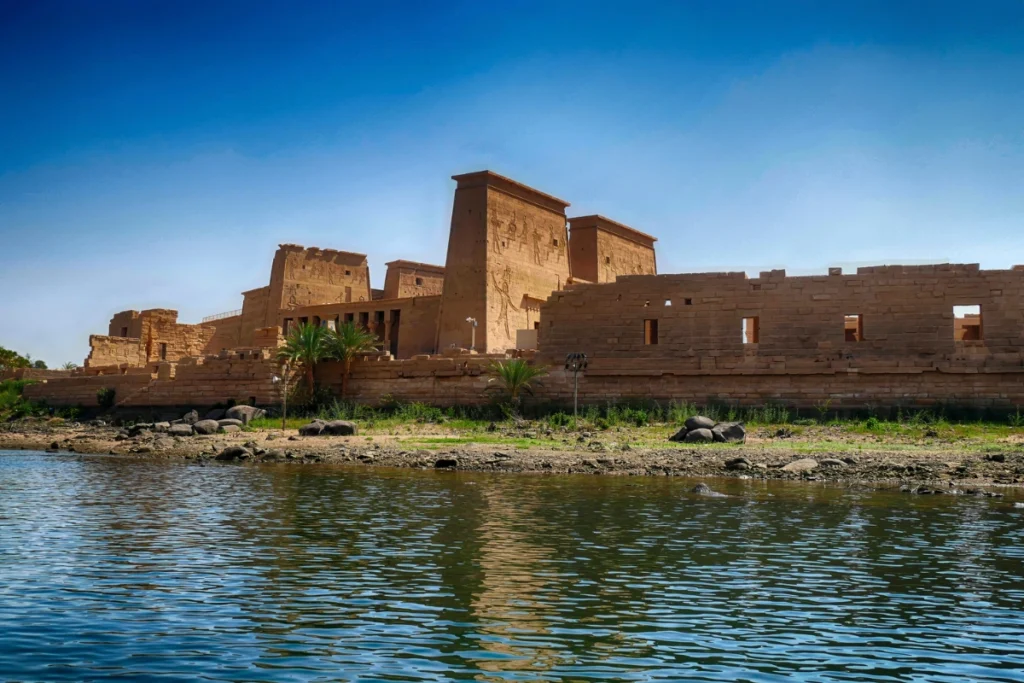
Philae Temple, dedicated to the goddess Isis, is an architectural masterpiece situated on an island. The temple complex, relocated to save it from flooding, features stunning reliefs and columns. Furthermore, the sound and light show here brings the history and mythology of the site to life.
Karnak Temple

The Karnak Temple complex in Luxor is one of the largest religious buildings ever constructed. Dedicated to the Theban triad, it includes vast halls, towering obelisks, and intricately carved columns. In addition, the Avenue of Sphinxes leading to the temple enhances its grandeur.
Saqqara
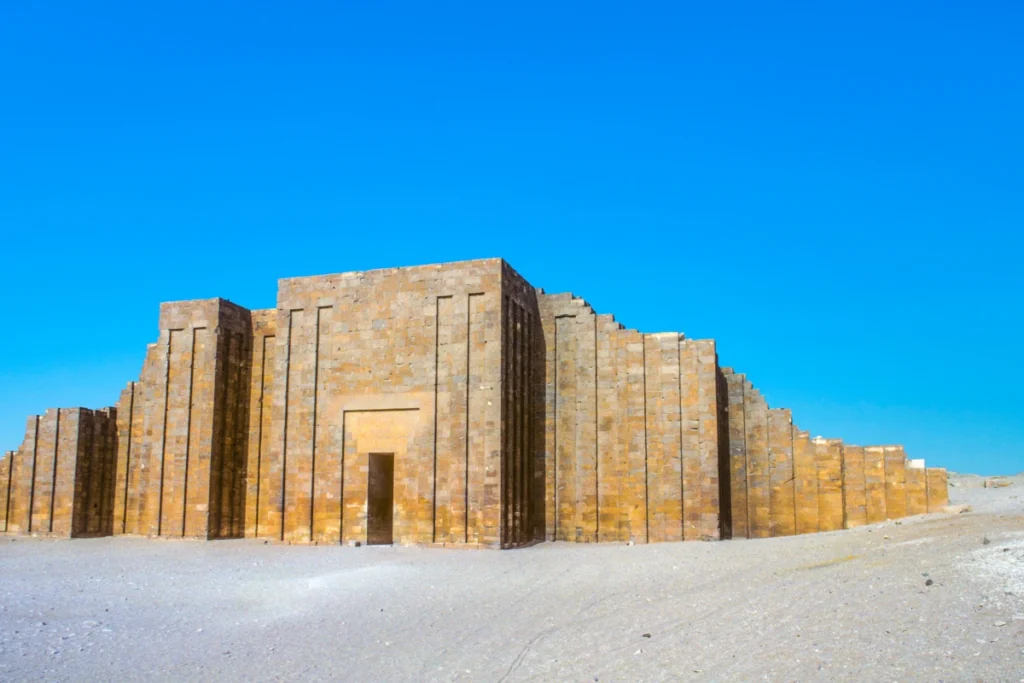
Saqqara, the ancient burial ground, is best known for the Step Pyramid of Djoser. This pyramid represents an important evolution in ancient Egyptian architecture. Moreover, the vast necropolis includes numerous tombs and monuments from various periods of Egyptian history.
Nile River

The Nile River, often referred to as the lifeblood of Egypt, has nurtured civilizations for millennia. Cruising along the Nile offers a unique perspective on Egypt’s history and landscapes. Additionally, the riverbanks are dotted with temples, villages, and lush greenery.
White Desert
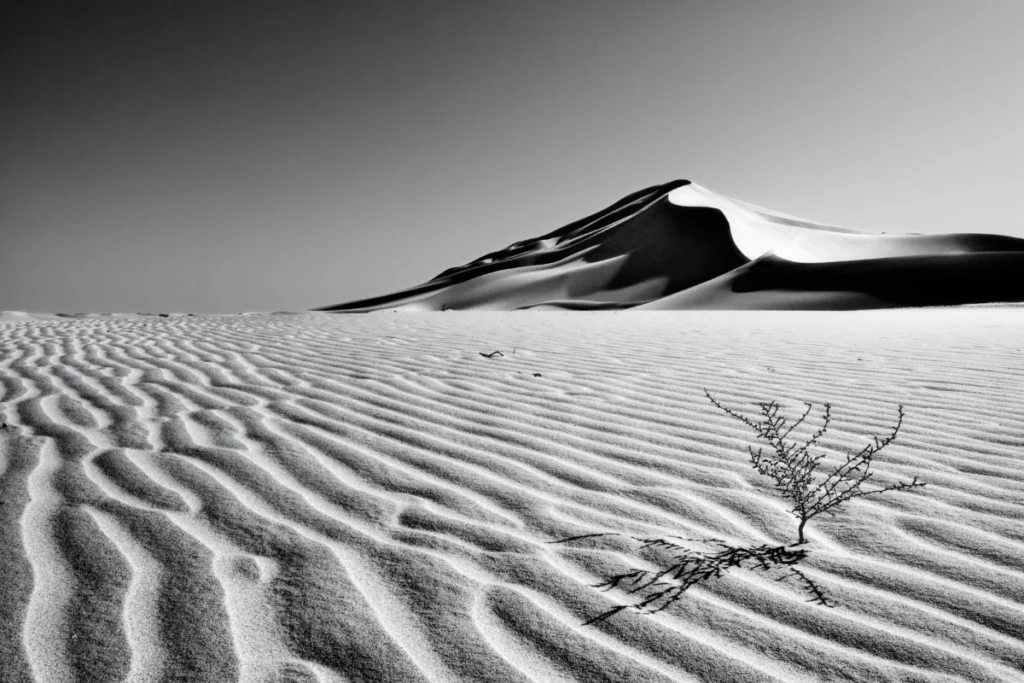
The White Desert, with its surreal chalk rock formations, resembles a lunar landscape. This natural wonder is perfect for camping and exploring unique geological formations. Moreover, the stark contrast between the white rocks and the golden sand creates an otherworldly experience.
Blue Hole
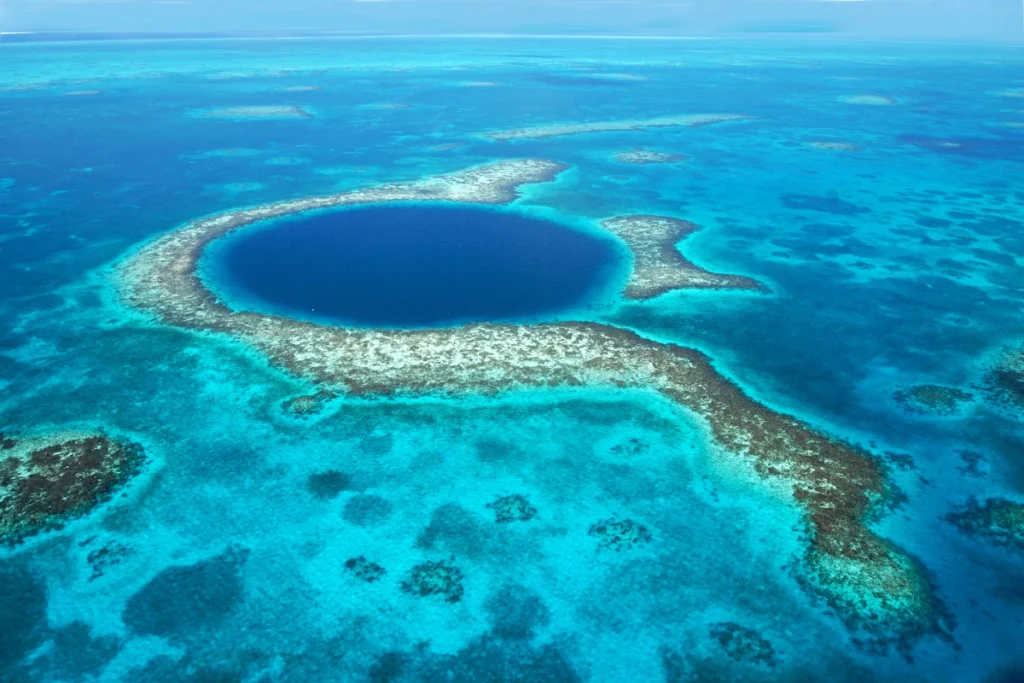
The Blue Hole near Dahab is a world-renowned dive site known for its deep blue waters and challenging dives. This underwater sinkhole attracts experienced divers seeking to explore its depths. Furthermore, the surrounding coral reefs teem with vibrant marine life.
Ras Mohammed National Park
Ras Mohammed National Park, located at the southern tip of the Sinai Peninsula, is a protected area of stunning natural beauty. The park features coral reefs, diverse marine life, and mangrove forests. In addition, it offers excellent opportunities for diving, snorkeling, and bird watching.
Mount Sinai
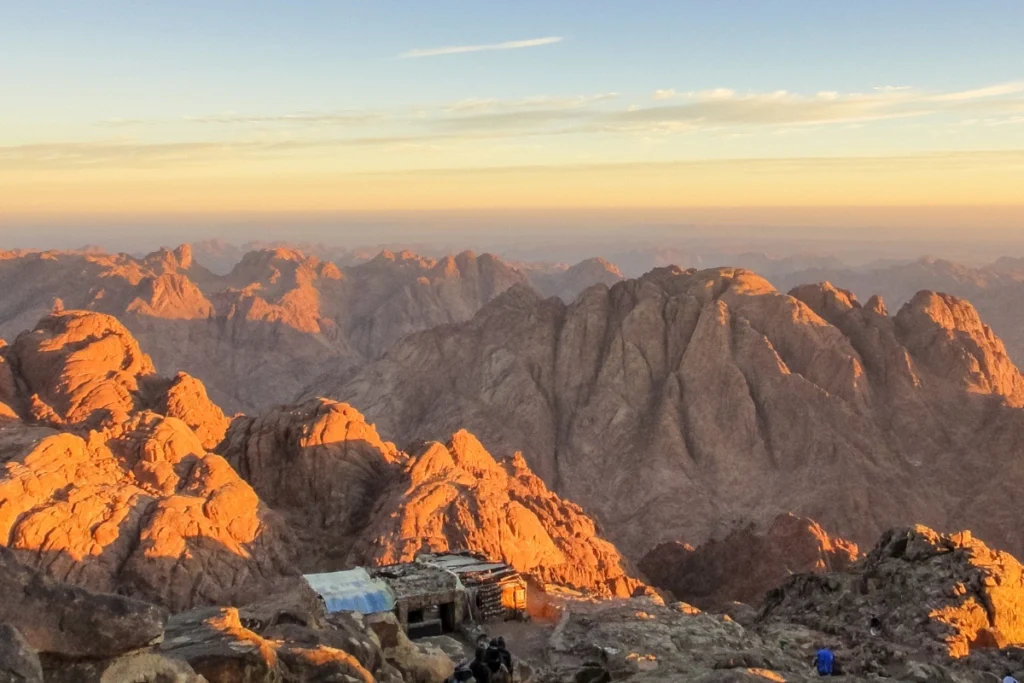
Mount Sinai, a significant religious site, is believed to be where Moses received the Ten Commandments. The mountain offers breathtaking views and a spiritual journey for many pilgrims. Furthermore, the trek to the summit is a rewarding experience, especially at sunrise or sunset.
Dahshur

Dahshur is home to some of Egypt’s earliest pyramids, including the Bent Pyramid and the Red Pyramid. These structures represent key developments in pyramid construction. Additionally, the site is less crowded than Giza, providing a more tranquil exploration of ancient history.
El Gouna
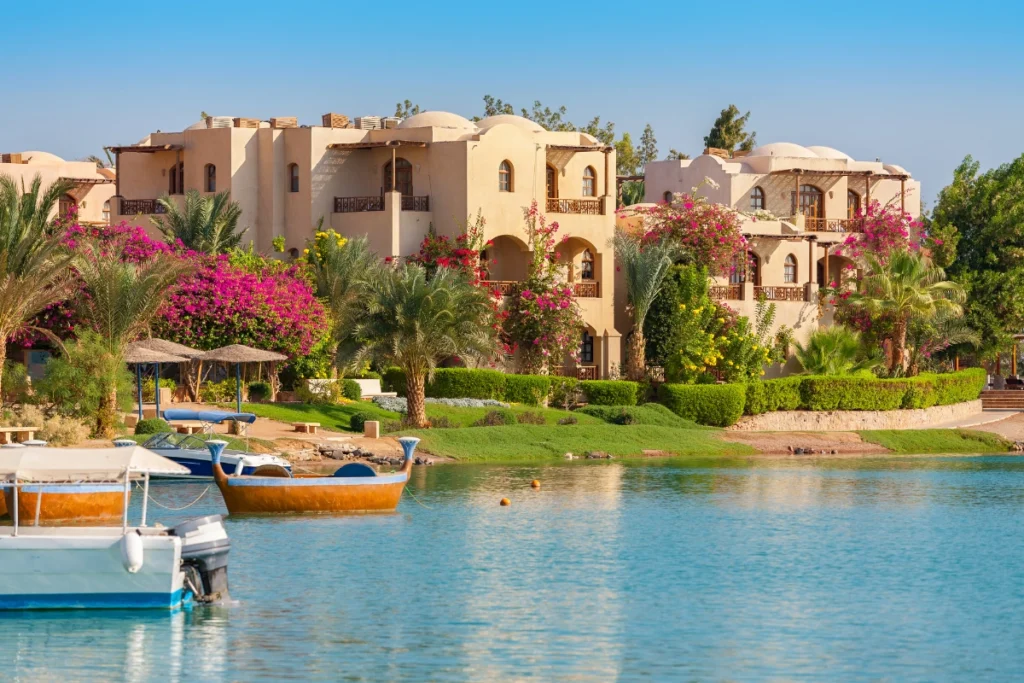
El Gouna is a modern resort town on the Red Sea, known for its luxury hotels and water sports. The town’s canals and lagoons offer a unique landscape, perfect for relaxation and recreation. Moreover, El Gouna’s vibrant nightlife and cultural events attract visitors year-round.
Ras Sudr

Ras Sudr, a coastal town on the Gulf of Suez, is famous for its kite surfing and windsurfing spots. The consistent winds and shallow waters create ideal conditions for these sports. Additionally, the area’s natural beauty and relaxed vibe make it a great getaway.
Marsa Alam

Marsa Alam, located on the Red Sea coast, is renowned for its pristine beaches and coral reefs. It’s a top destination for diving and snorkeling, with sites like the Elphinstone Reef. Furthermore, the nearby Wadi el-Gemal National Park offers stunning desert landscapes and wildlife.
Wadi Rum
Wadi Rum, although primarily located in Jordan, extends into Egypt’s Sinai Peninsula. This vast desert landscape, with its dramatic rock formations, offers adventure and exploration. Moreover, its rich history and cultural significance add depth to its natural beauty.
Taba

Taba, a small town on the Sinai Peninsula, offers stunning views of the Red Sea and the nearby mountains. It’s a great spot for snorkeling, diving, and exploring the underwater world. Additionally, Taba’s proximity to the Israeli border makes it a convenient entry point for travelers.
Colossi of Memnon

The Colossi of Memnon are two massive stone statues of Pharaoh Amenhotep III, standing guard at the entrance of his mortuary temple. These iconic statues have withstood the test of time and natural disasters. Moreover, they are a testament to the grandeur of ancient Egyptian sculpture.
Luxor Temple
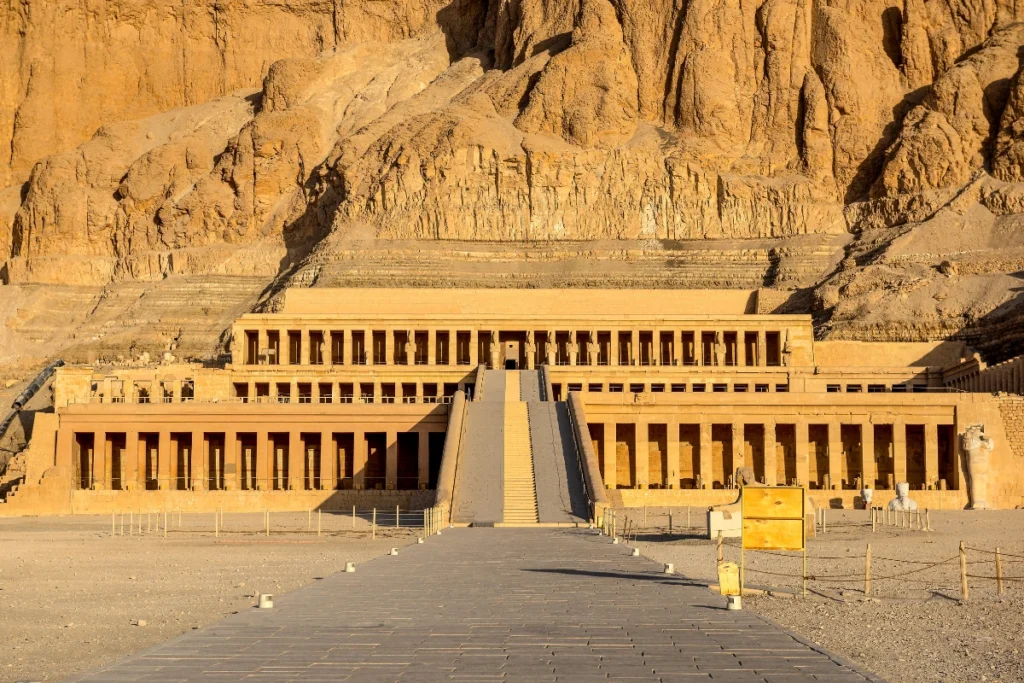
Luxor Temple, situated on the east bank of the Nile, is a magnificent structure dedicated to the rejuvenation of kingship. The temple’s impressive columns and statues create a majestic atmosphere. Additionally, it’s beautifully illuminated at night, offering a different perspective.
Temple of Hatshepsut

The Temple of Hatshepsut, built into the cliffs at Deir el-Bahari, is a stunning example of ancient Egyptian architecture. This mortuary temple honors one of Egypt’s few female pharaohs and features terraced levels and intricate reliefs. Furthermore, the surrounding landscape enhances its grandeur.
Abu Simbel Temple Complex

The Abu Simbel Temple Complex includes the Great Temple of Ramses II and the smaller Temple of Hathor. These temples are known for their massive statues and intricate carvings. Additionally, the relocation of the complex to save it from flooding is a remarkable engineering feat.
Temple of Kom Ombo

The Temple of Kom Ombo is unique because it is dedicated to two gods, Sobek and Horus. This dual dedication is reflected in the temple’s symmetrical design. Moreover, the detailed reliefs and mummified crocodiles in the museum nearby provide fascinating insights into ancient beliefs.
Temple of Edfu

The Temple of Edfu, dedicated to the falcon god Horus, is one of the best-preserved ancient Egyptian temples. Its towering pylons and intricate carvings make it a must-visit site. Additionally, the temple’s inscriptions provide valuable information about ancient religious practices.
Temple of Luxor
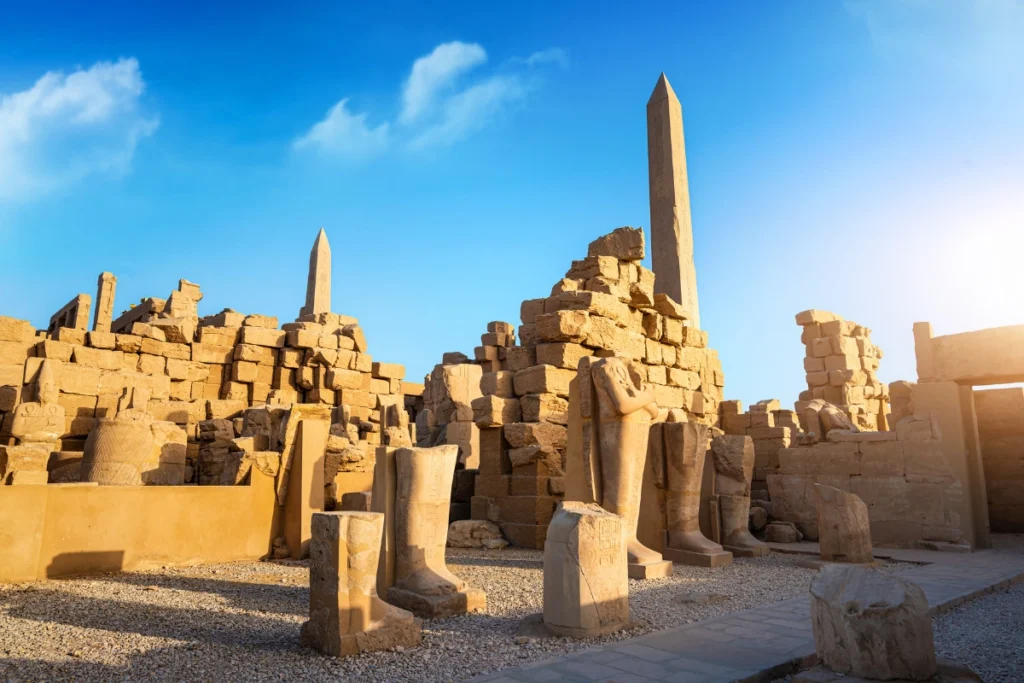
Luxor Temple, dedicated to the Theban triad of Amun, Mut, and Khonsu, is a central part of the city of Luxor’s ancient heritage. The grandeur of its architecture, including the massive statues of Ramses II and the impressive columns, showcases the artistry and religious significance of the site. Furthermore, the avenue of sphinxes connecting Luxor Temple to Karnak Temple highlights the ceremonial importance of this ancient pathway.
Temple of Philae
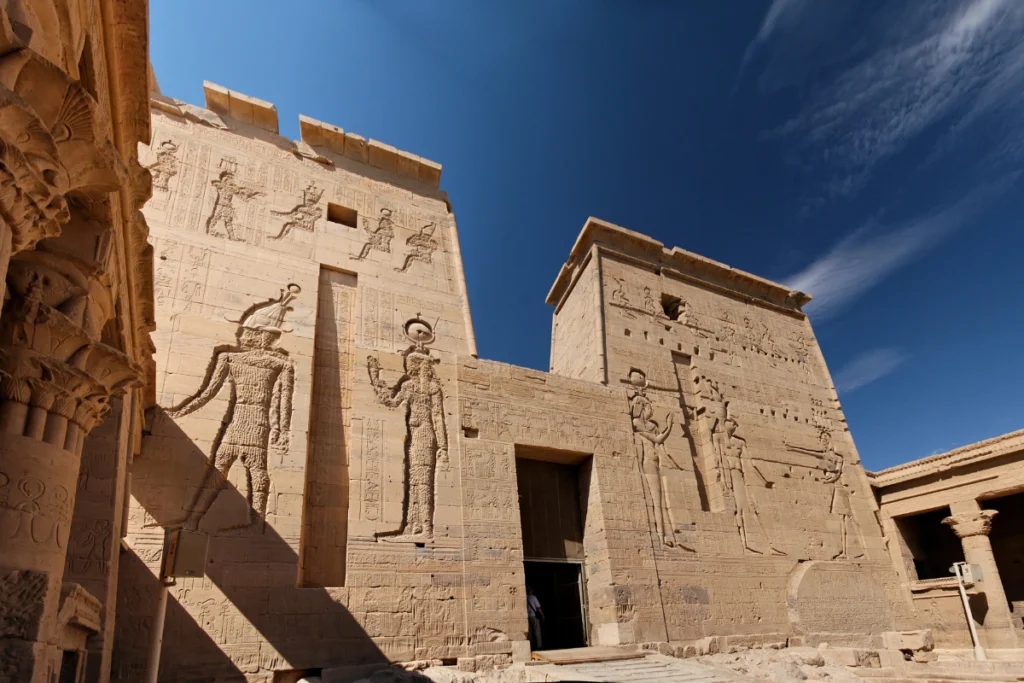
Philae Temple, dedicated to the goddess Isis, stands on an island in the Nile. The temple complex, known for its beautiful reliefs and columned halls, was painstakingly relocated to Agilkia Island to save it from flooding. Moreover, the sound and light show at Philae Temple vividly brings its history and mythology to life, making it a captivating experience for visitors.
Mosque of Muhammad Ali

The Mosque of Muhammad Ali, perched atop the Cairo Citadel, is a striking example of Ottoman architecture. Its impressive domes and towering minarets dominate Cairo’s skyline. Additionally, the mosque’s ornate interior and panoramic views of the city make it a key highlight for visitors exploring Cairo’s Islamic heritage.
Khan el-Khalili

Khan el-Khalili, Cairo’s bustling bazaar, offers a sensory overload of sights, sounds, and scents. This vibrant marketplace has been a center of trade and commerce since the 14th century. Furthermore, the labyrinthine alleys filled with shops, cafes, and workshops provide an authentic glimpse into traditional Egyptian life.
Alexandria Library

The modern Bibliotheca Alexandrina, inspired by the ancient Library of Alexandria, stands as a beacon of knowledge and learning. Its unique architectural design and extensive collections make it a significant cultural and intellectual center. Additionally, the library hosts numerous exhibitions, conferences, and cultural events, contributing to Alexandria’s rich intellectual heritage.
Al-Azhar Park

Al-Azhar Park, a green oasis in the heart of Cairo, offers a serene escape from the city’s hustle and bustle. The park’s beautifully landscaped gardens, fountains, and historic Islamic architecture provide a perfect setting for relaxation and leisure. Moreover, the panoramic views of Cairo’s skyline from the park are breathtaking.
Cairo Citadel

The Cairo Citadel, a medieval Islamic fortification, is a historical landmark that dominates the city’s landscape. Built by Salah al-Din, it served as the seat of government and residence for Egypt’s rulers for centuries. Additionally, the citadel complex includes several mosques, museums, and palaces, offering a deep dive into Cairo’s rich history.
Karnak Temple Complex

The Karnak Temple Complex, spanning over 200 acres, is a vast open-air museum showcasing the grandeur of ancient Egyptian architecture. The complex’s towering obelisks, massive columns, and intricate carvings narrate the story of Thebes’ religious significance. Furthermore, the nightly sound and light show at Karnak provides an enchanting experience.
Temple of Horus at Edfu
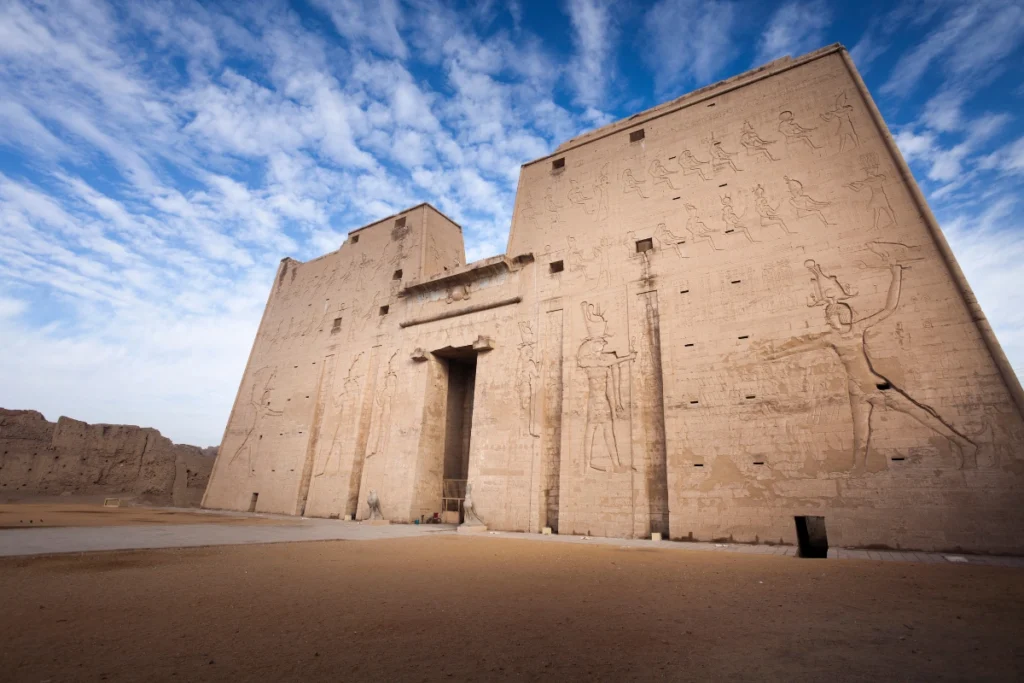
The Temple of Horus at Edfu is one of the best-preserved ancient Egyptian temples, dedicated to the falcon god Horus. Its impressive pylons and well-preserved reliefs depict the mythological battles of Horus. Additionally, the temple offers insights into Ptolemaic architecture and religious practices.
Coptic Cairo

Coptic Cairo, a historic part of the city, is home to some of the oldest Christian churches in the world. The Hanging Church and the Coptic Museum are key attractions that showcase the rich heritage of Egypt’s Christian community. Moreover, the area’s narrow lanes and ancient structures provide a glimpse into the early Christian era.
Valley of the Queens

The Valley of the Queens, the final resting place of Egypt’s queens, is a treasure trove of beautifully decorated tombs. The tomb of Queen Nefertari, in particular, stands out for its vivid and well-preserved wall paintings. Additionally, the site offers insights into the burial practices and beliefs regarding the afterlife for royal women.
Temple of Seti I

The Temple of Seti I in Abydos is a significant archaeological site, known for its well-preserved reliefs and detailed inscriptions. Dedicated to the god Osiris, the temple also includes the famous Abydos King List. Furthermore, the temple’s exquisite artwork provides valuable information about ancient Egyptian religion and history.
Temple of Khnum
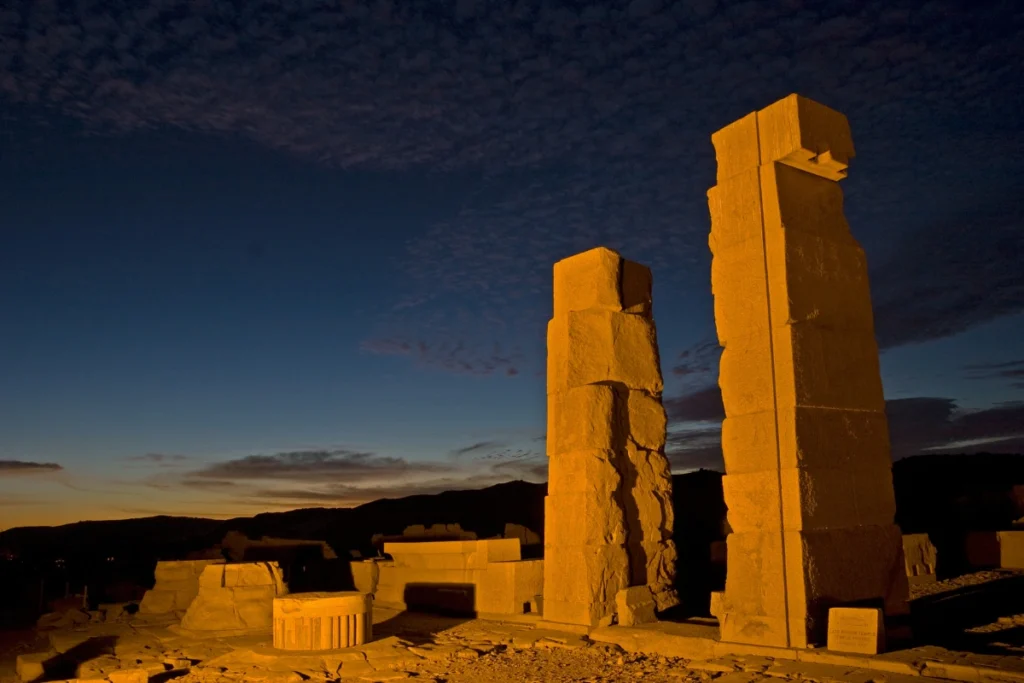
The Temple of Khnum in Esna is dedicated to the ram-headed god Khnum, the creator of humanity. The temple’s hypostyle hall, adorned with intricate carvings and inscriptions, is particularly impressive. Moreover, the ongoing excavation and restoration work at the temple continue to reveal new historical insights.
St. Catherine’s Monastery

St. Catherine’s Monastery, located at the foot of Mount Sinai, is one of the oldest continuously operating Christian monasteries in the world. The monastery’s library houses ancient manuscripts and religious texts of great significance. Additionally, the site’s stunning location and spiritual atmosphere attract pilgrims and tourists alike.
Deir el-Medina

Deir el-Medina, the village of the artisans who worked on the royal tombs, offers a unique glimpse into the daily lives of ancient Egyptian workers. The well-preserved houses, tombs, and artifacts provide valuable insights into the social and cultural aspects of the time. Moreover, the village’s detailed tomb paintings are a testament to the artisans’ skill and artistry.
Temple of Hathor at Dendera
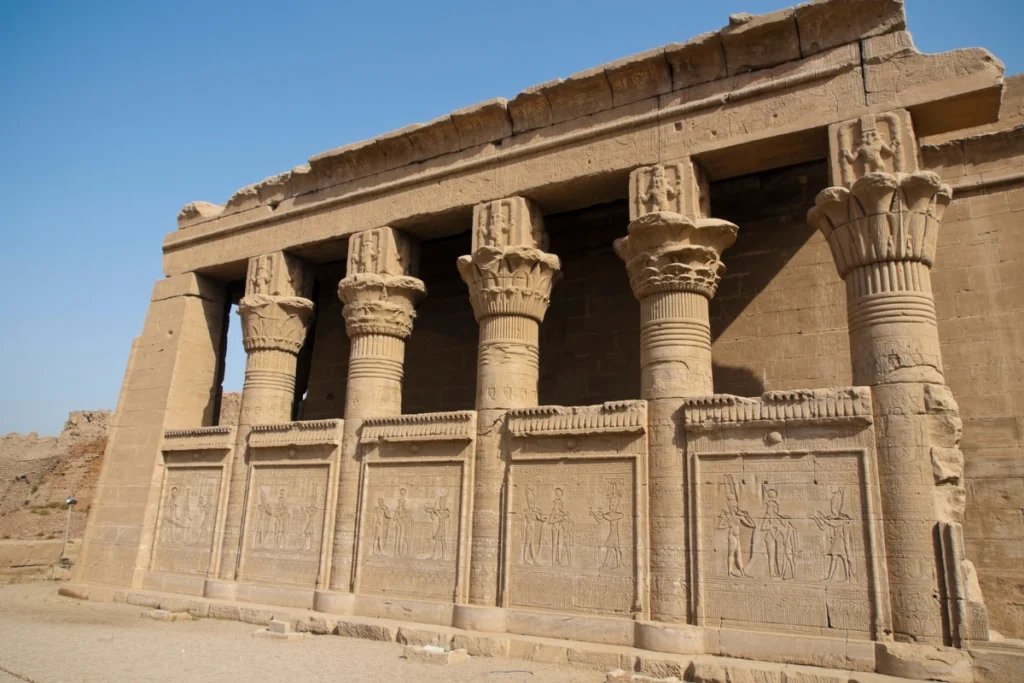
The Temple of Hathor at Dendera is one of the best-preserved temple complexes in Egypt, dedicated to the goddess of love and joy. The temple’s vibrant ceiling paintings and intricate carvings are remarkable. Additionally, the site’s underground crypts and the famous Dendera Zodiac add to its allure.
Temple of Ptah at Memphis
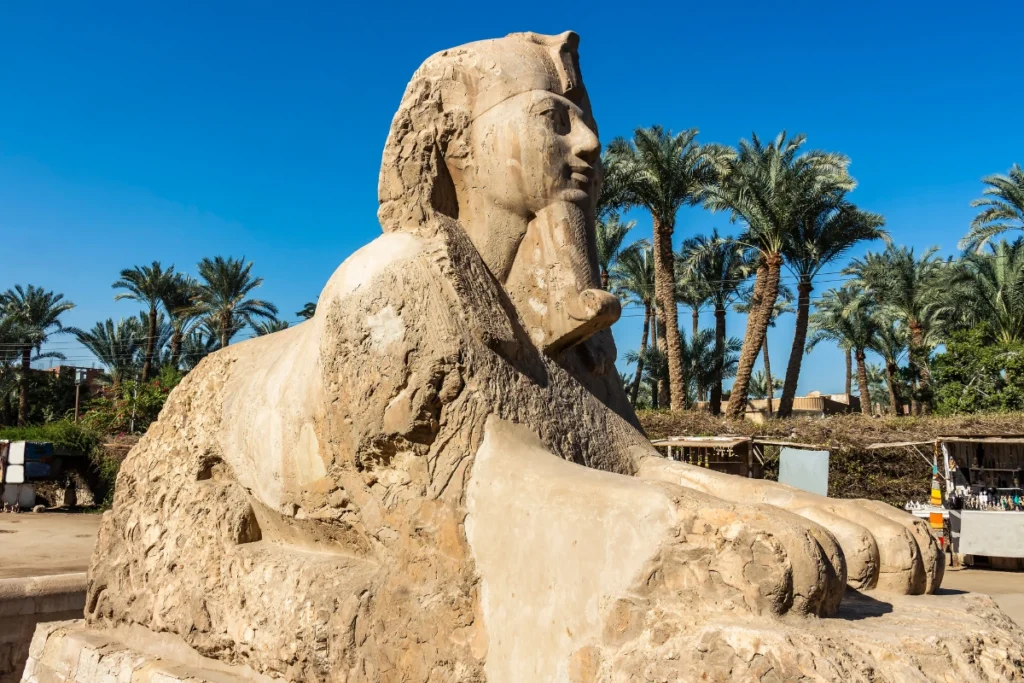
The Temple of Ptah at Memphis, once the center of worship for the creator god Ptah, is a site of great historical significance. The colossal statues and the Alabaster Sphinx are key highlights of this ancient city. Moreover, the site’s proximity to the pyramid fields of Saqqara makes it an essential stop on a historical tour.
Exploring these 50 destinations in Egypt provides a comprehensive journey through the country’s rich history, vibrant culture, and stunning landscapes. Each location offers unique insights into Egypt’s ancient civilizations and modern-day life, making it a must-visit for travelers seeking a deep and immersive experience.




